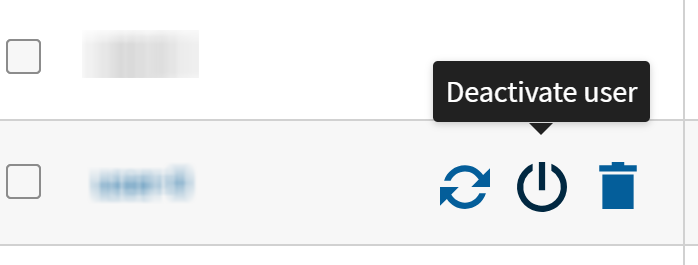Deactivating users
Deactivated users can no longer log in toTalend Cloud and cannot use their personal tokens.
However, the objects owned by these deactivated accounts remain intact and available to the active users who have appropriate access rights and permissions.
Before you begin
Procedure
Use the public REST API or the Users & Security page in
Talend Management Console
to deactivate users when they leave your company.
- In Talend Management Console:
- Go to .
- Hover your cursor over the user to be deactivated in the
First name column to display the corresponding button.

- Click the
 button and in the dialog that is displayed, confirm the
deactivation.
button and in the dialog that is displayed, confirm the
deactivation.The status of this user becomes deactivated in the Status column.
- API:
- Create an API token from the portal:
-
In the top-right corner, click your username.
-
Click .
- Enter a token name and click Generate.
- Copy the generated token and paste it somewhere secure.
-
- Find the account name of the user to deactivate in .
- Find the username of the user to deactivate. From Talend Management Console, go to and copy the login of the user.
- Use the information from the previous steps to write your request. For
example, using a curl request:
curl -v -X POST --header "Authorization: Bearer <token_value>" --header "Content-Type: application/json" -d '{ "accountName": "<account_name>", "userName": "<user_name>" }' 'https://iam.us.cloud.talend.com/scim/v2/Users/deactivate'Note that you must use a POST method, and the two headers are mandatory.
- Create an API token from the portal:
Did this page help you?
If you find any issues with this page or its content – a typo, a missing step, or a technical error – let us know how we can improve!
